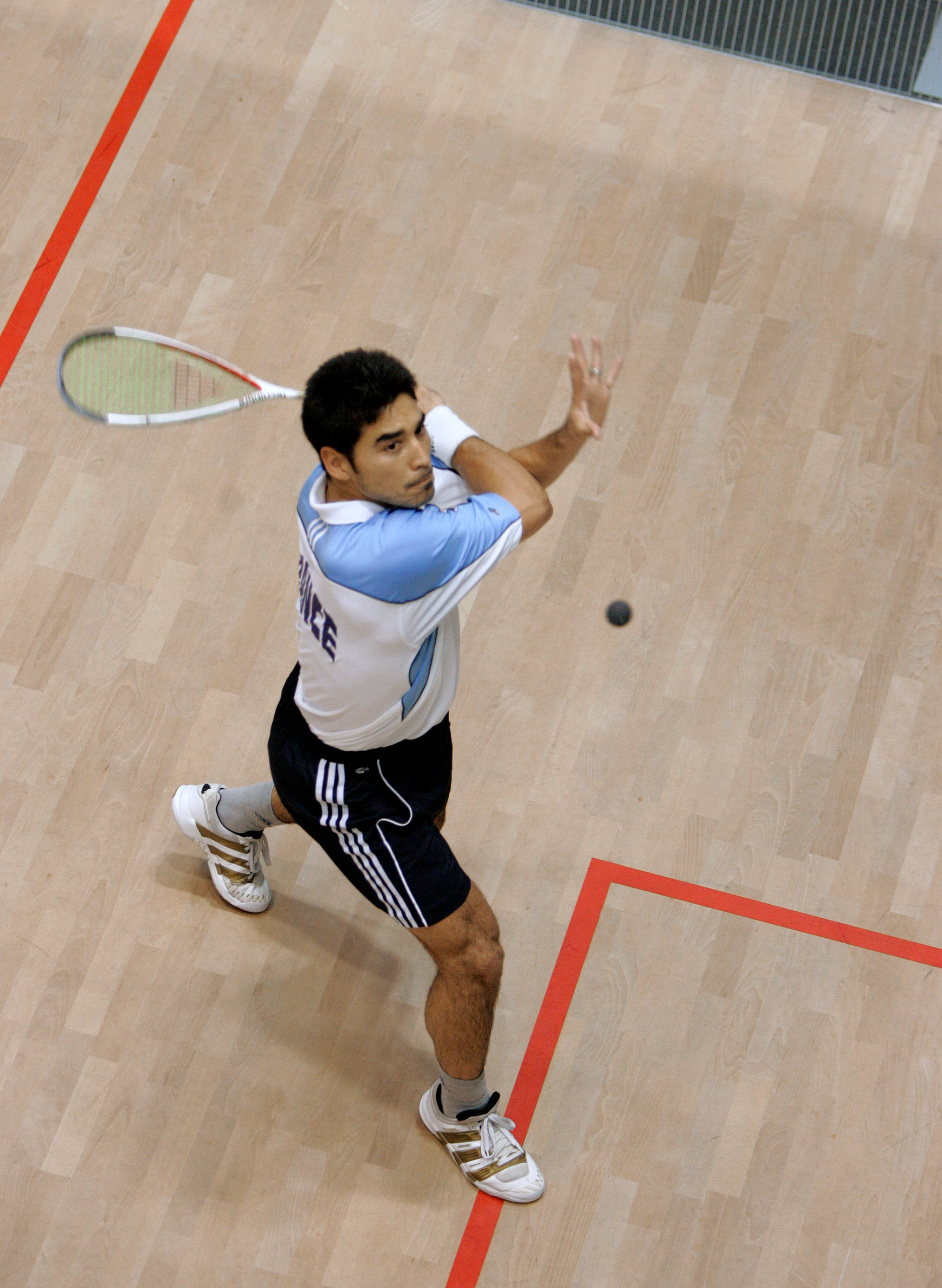By Richard Millman, Director of Squash, Kiawah Island Club

Everyone wants an edge in a squash rally—that little advantage that puts a fraction of daylight between you and your opponent.
Unfortunately, when you are returning the serve you are already behind, because the server has the chance to dictate terms to you. However, even though you don’t know what’s coming, there are some good things you can do to give yourself the best chance of getting back on terms—and maybe even ahead.
First, choose a good spot to stand in. Generally you should stand in the center of the return court to afford yourself the best chance of covering all of your opponent’s possible shots. Try and establish this point by using your peripheral sensitivity (your general awareness of the things around you—the side wall, back wall, half court line and short line) to orient yourself on the court. As a rough guideline you might look for a point about 18 inches from the corner of the service box, but try not to depend on looking for the service box—get used to “feeling” your way.
From this position you have a good chance of volleying the ball either before it hits the side wall, or after it hits the side wall—if your opponent hits a good wide serve. As you get better, you may like to move further forward to put pressure on the server. But make sure you can react quickly enough before you try this advanced position.
Okay, this is your start point. But before we talk about what you’re going to be doing we need to think about what we might have to deal with; what the server is going to throw at you.
A good server will do anything they can to get that “edge” we talked about earlier. Let’s list the weapons that may be used against you:
Width: Hitting the ball against the side wall beside you so that you have to contend with the ricochet of the ball off the wall (this is the most common weapon).
Height: In addition to the width, the ball is now dropping straight down on you like some dive bomber.
Variation in pace: Is the opponent going to send a rocket scorching across the court at you? Or is the ball coming so slow that you wonder if it will ever come? Or has your opponent persuaded you with their body language that they are going to crush the ball, only to catch you with a “change-up” that completely screws up your rhythm? Or is it the opposite change-up—slow to fast? And perhaps it’s not just the pace of the shot that is varied. Sometimes an opponent will lull you to sleep for the first game, serving at the same rhythm until a key moment in the third game, say 6-5, looking for a break and suddenly the serve comes much earlier than you have gotten used to the opponent delivering it. Remember, as soon as the marker calls the score, the opponent may serve—and you’d better be ready!
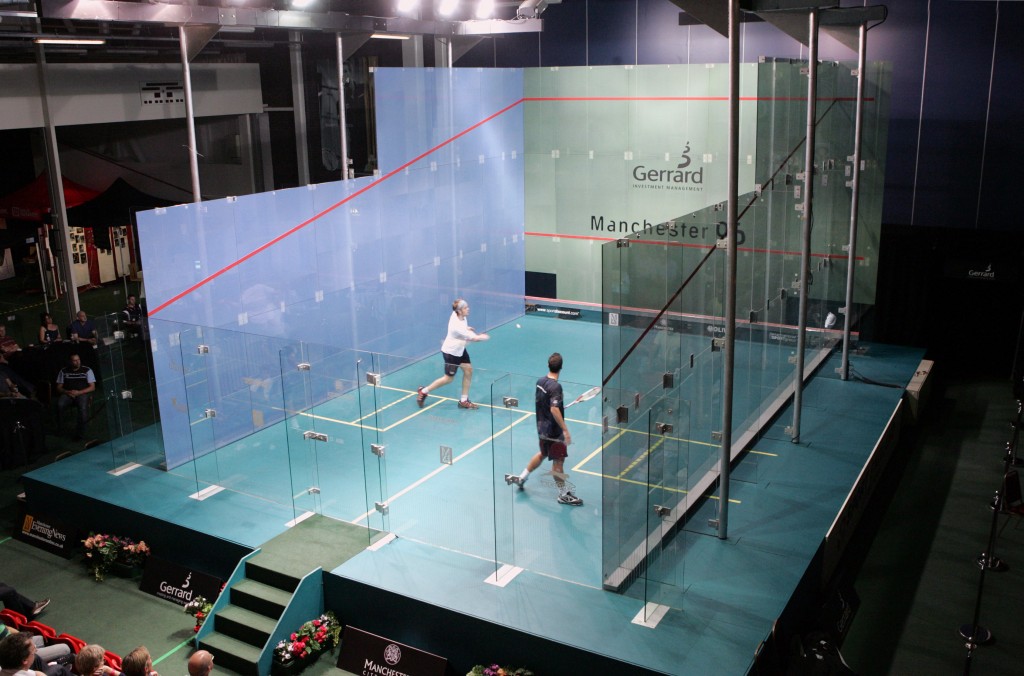
Direction: You might think that because you are returning on the forehand side that you are going to hit a forehand shot. Suddenly you realize that that assumption wasn’t the brightest thought you’ve ever had, as your opponent fires one down the middle that hits you on your rear end. Whoops!
Okay. So we pretty much know what to expect now. How do we deal with it?
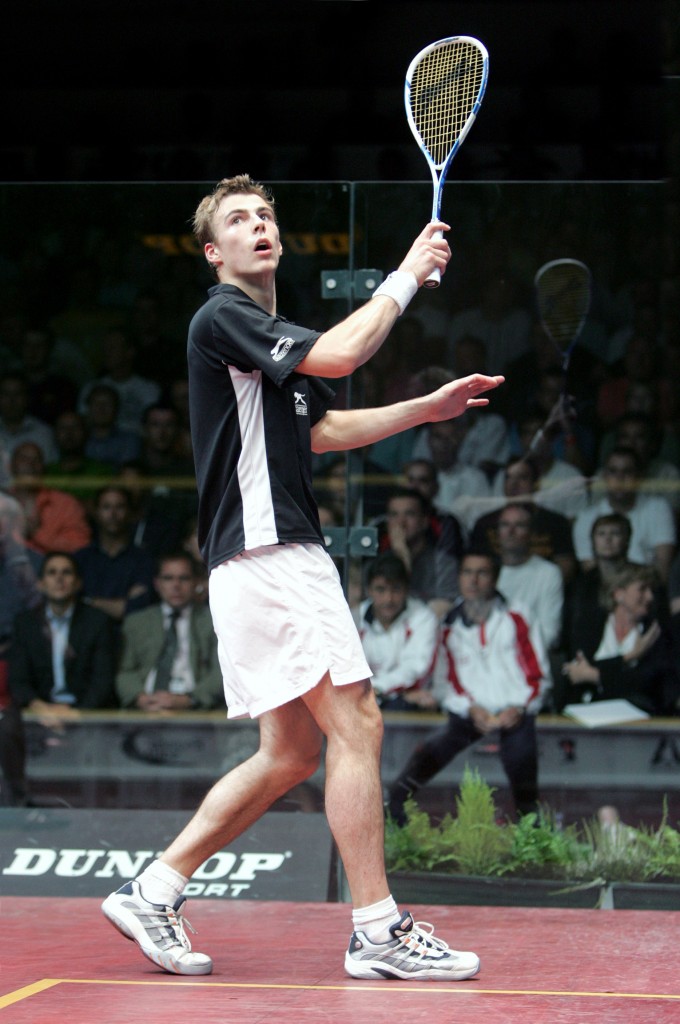
The first thing is to take a position that gives maximum opportunity to cover the serve. I favor a position called the “hunting” position. Stand addressing the ball in your opponent’s hand as they prepare to serve. The foot on the side nearest to your opponent should be forward with your weight leaning toward the ball and your racquet in a cocked wrist position just below your face under your nose, pointing towards the ball.
As the opponent serves, move your body in rhythm with the ball. As the serve travels, you will pick up more and more information about all the things we talked about earlier: Width, height, pace, direction. Use this information to organize your position and return of serve choice.
As soon as you have gleaned whether the ball is coming to your backhand or your forehand—prepare your racquet. Your preparation should be proportional in size to the amount of time you are going to have to execute your shot. Many things can affect this.
If the serve is fast and accurate, you will need a smaller preparation in order to successfully intercept the ball. However, if it is slow and accurate you may also need a very small preparation—the window of opportunity to execute your shot may be incredibly short, as the ball drops at a steep angle onto the side wall on its way (potentially) to dying in the back corner.
In general, volleys require smaller preparations than traditional ground shots like a drive or a boast, because there is less time to execute the swing. But on a return of serve there will likely be even less time!
The classic return of serve is a medium pace, high, straight ball that travels along the side wall roughly tracing the “out” line. This is the first return that you should practice and it should become your “stock” return. The shot should be played after you have become rhythmically attuned to the pace of the incoming ball with your own movement, you have recognized and prepared for either a forehand or a backhand, you have organized the direction and target of your return, you have balanced, you have started your movement into position for the shot and only then should you release the ball by transferring your body weight using a minimal swing.
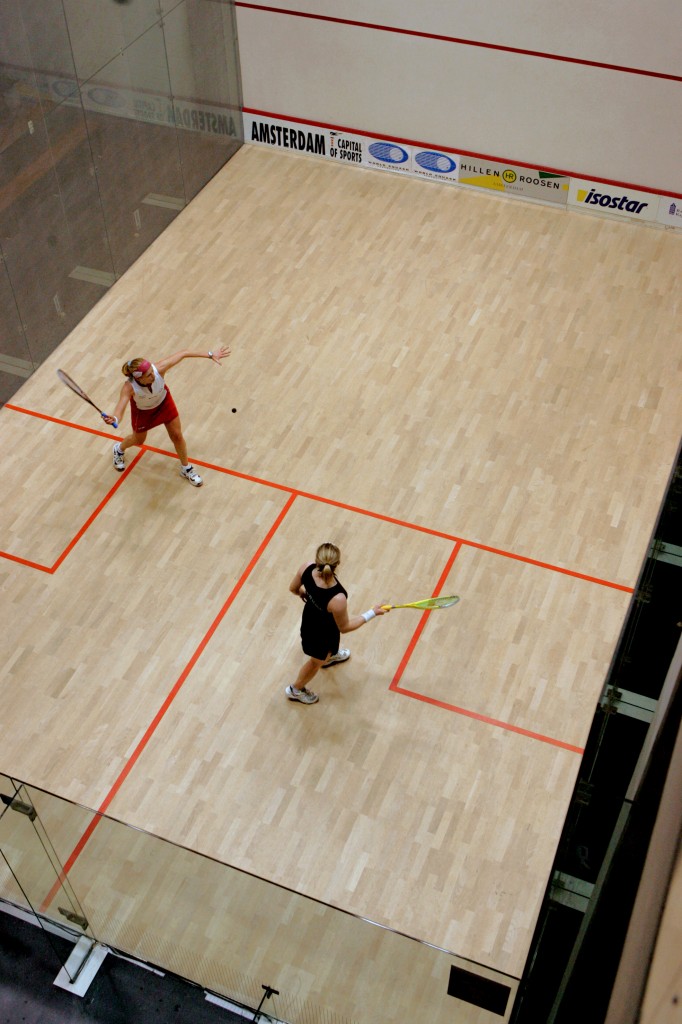
The next return you should learn is the same type of ball across the court. But beware! A bad cross-court is one of the worst shots in squash. A good cross-court, floated, return that dies on the side wall is one of the best shots in squash. So you are walking a fine line!
The next return you should learn is the straight drop volley return. Make sure you play this shot as you move into position for a potential pick up from your opponent, so that you are ready to counter attack. If you stand admiring your return the chances are that you will still be standing there when your opponent returns your devastating drop volley with a handsome drop or trickle boast (the little shot that hits the side wall close to the front wall at the front of the court and then dies) of their own.
Finally you may want to try the cross-court drop-volley or volley nick. This is one of the flashiest shots in squash, but rarely brings consistent rewards. Just like the straight drop-volley return, only play it as you are on your way into position for a possible retrieval by your opponent—or you may find yourself the victim of your own brilliance! And certainly only try it from a loose serve by your opponent.
So to summarize:
1) Address the ball in the opponent’s hand as they prepare to serve.
2) Expect the ball to be “tight” (close to the side wall).
3) Don’t be surprised if the ball drops down on you from a great height.
4) Be ready for any pace of shot and any moment of release.
5) Prepare for the ball to be struck anywhere into your side of the court—including straight at you.
6) Prepare your racquet as soon as you know whether it’s a forehand or a backhand.
7) Move in rhythm with the ball.
8) Stop and balance before you play the shot.
9) Moderate your swing size in proportion to how much time you have available to execute the shot—usually a smaller preparation than with a ground shot.
10) Always look for the opportunity to volley.
11) Play your shot simultaneously with your movement into position for the next shot (usually to the center of the court).
12) Practice the four main returns—High straight length along the wall (most frequent), high cross-court float, short straight drop volley, and (sparingly) the cross-court drop volley or volley nick to the opposite front corner.
Good luck! I hope you can steal back that all-important edge from the server!
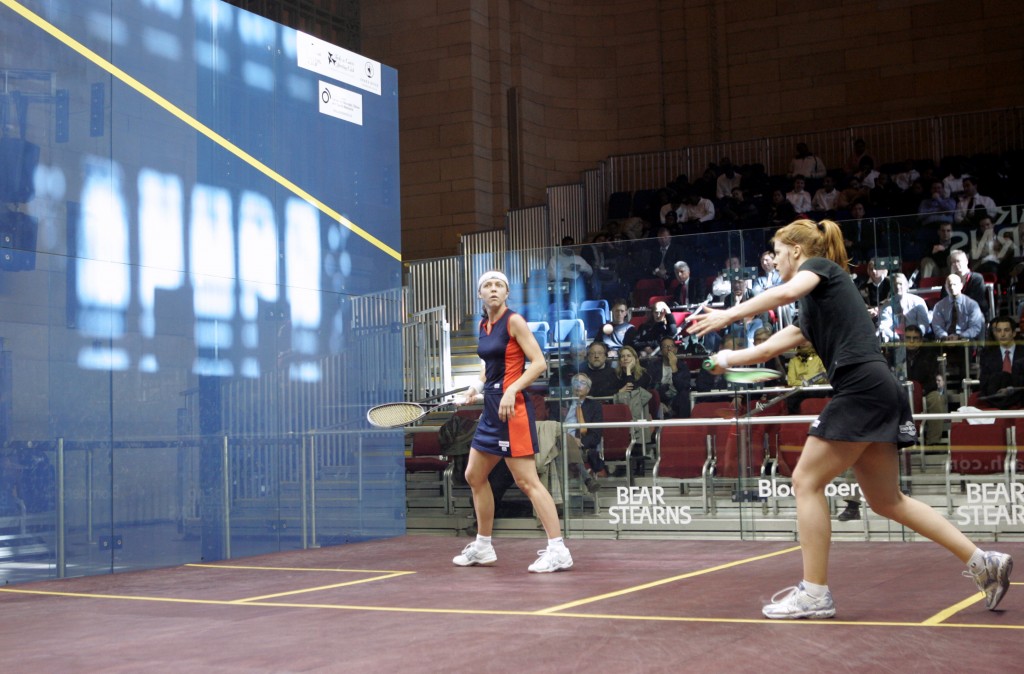
Skill Level Tips
Simple practice tips for 3.0, 4.0 and 5.0 players
3.0
When returning serve, make your mind think ahead of the ball. Before the opponent serves, do a mental dress rehearsal of some possible serves and picture yourself hitting the return. Then when the ball comes all you have to do is repeat the dress rehearsal!
4.0
To make you position yourself effectively, try tapping your leg with your racquet just before your opponent serves. The sensation you feel in your leg will stay with you long enough to remind you to focus on your leg/footwork when setting up for your return.
5.0
Vary the position you take to return the serve. Get as far forward as you can without sacrificing the quality of your return, but also vary standing in different positions to throw off your opponent’s targeting.


